
TARGET 070314
Mission Control during
The Launch of Apollo 11
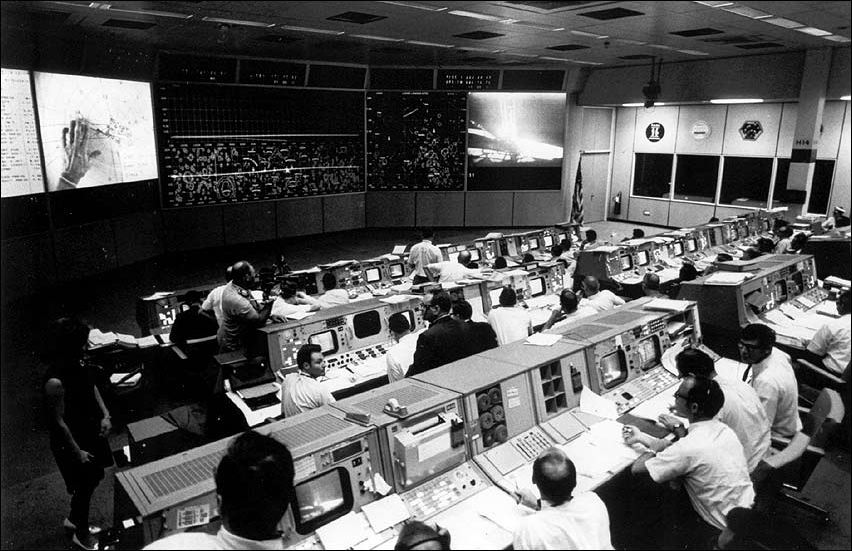
On July 20, 1969, the human race accomplished its single greatest technological achievement of all time when a human first set foot on another celestial body. Six hours after landing at 4:17 p.m. Eastern Daylight Time (with less than 30 seconds of fuel remaining), Neil A. Armstrong took the “Small Step” into our greater future when he stepped off the Lunar Module, named “Eagle,” onto the surface of the Moon, from which he could look up and see Earth in the heavens as no one had done before him.
But that is the part of the story you always read about. Often, the job of a remote viewer is to get behind the scenes, and describe what is not common knowledge. Therefore, this Target of the Week focuses on the people, location, activities, and purposes of the Mission Control Team, back at NASA. The photo above shows the control room with the engineers and experts at work, preparing for lift-off.
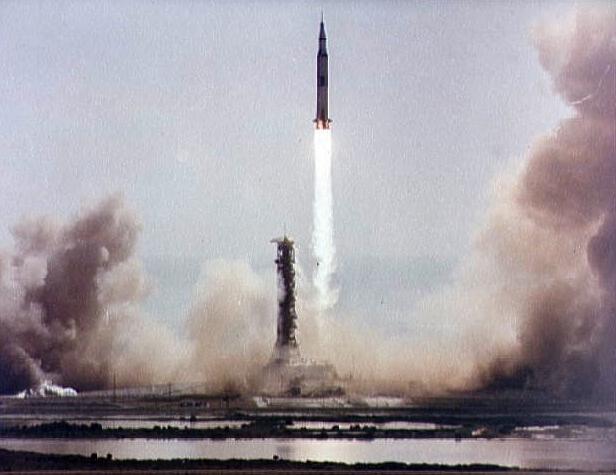
"The Eagle is away"
But the people at Mission Control were not finished. During Apollo 11's trip to the moon and back, they were constantly busy monitoring on-board systems, on-board experiments, the astronauts' life signs, switching telemetry from one Earth station to another as the Earth rotated each tracking station out of range, and a myriad of other jobs which kept Mission Control busy and working 24/7.
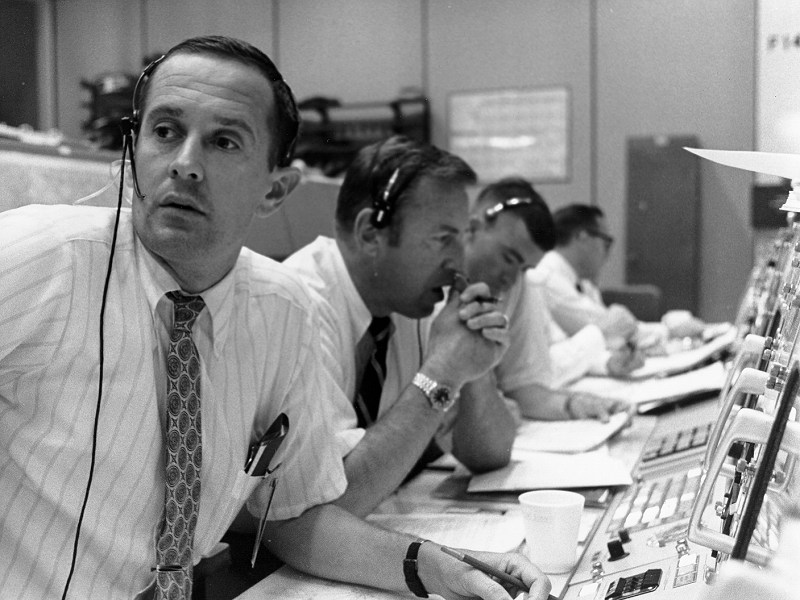
Flight controllers during lunar module descent
But at the end, the celebration of such a mission well accomplished is a reward that few humans ever get to experience.
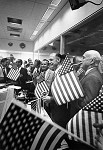
"A mission well accomplished"
Located at the Lyndon B. Johnson Space Center (originally known as the Manned Spacecraft Center), in Houston, Texas, the NASA MCC was first used in June 1965, with Gemini 4, the first American extravehicular-activity or spacewalk mission. In approximately 1992, JSC started building an extension to the Old building 30, housing two new MCC (Mission Control Center) rooms, now known as Flight Control Rooms (FCRs, pronounced "ficker"). The "White" FCR is used for Shuttle Operations and the "Blue" FCR is used for ISS operations. It was the "blue" FCR that was used for Apollo 11.
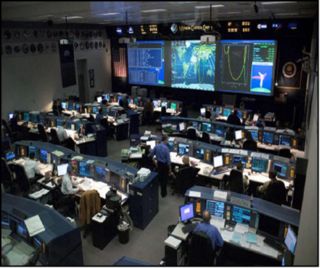
The "blue" room
Blue FCR Console Positions
The blue FCR is arranged in 5 rows of three consoles, plus one in the rear right corner. From left to right, as viewed from the rear of the room, the front row consists of ADCO, THOR, and PHALCON. The second row consists of OSO, ECLSS pronounced "eekliss", and ROBO. The third row consists of ODIN, depending on phase of flight, either ACO (Shuttle docked) or the CIO (Free-flight Operations) and OpsPlan. The fourth row consists of CATO, FLIGHT—the Flight Director, and CAPCOM. Finally, the last row consists of GC, depending on the phase of flight, either, RIO, EVA, VVO, or FDO (reboosts only), and finally, SURGEON. In the back, right corner, behind the surgeon, occasionally the PAO (Public Affairs Officer) is present, but rarely.
FEEDBACK MAP
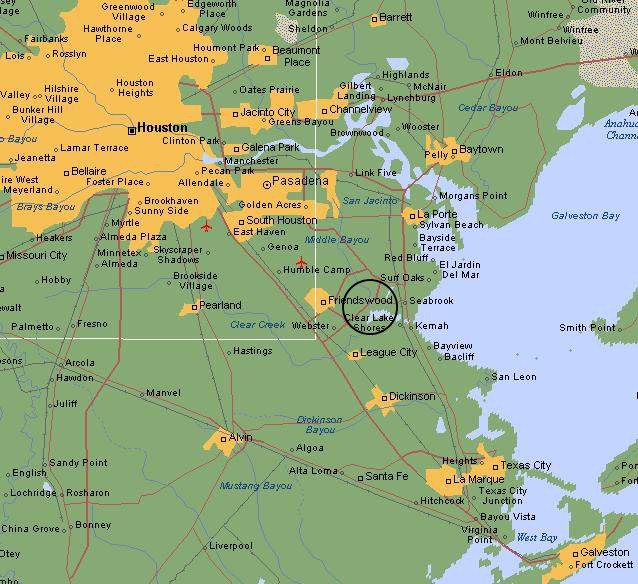
Many thanks to Ken Dye for providing us with this target.